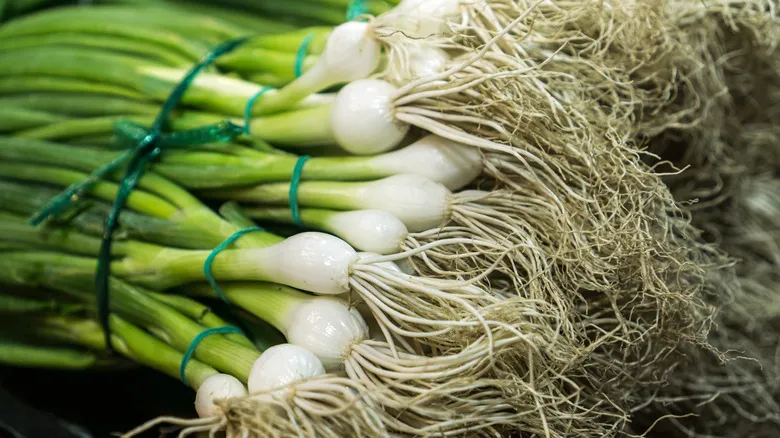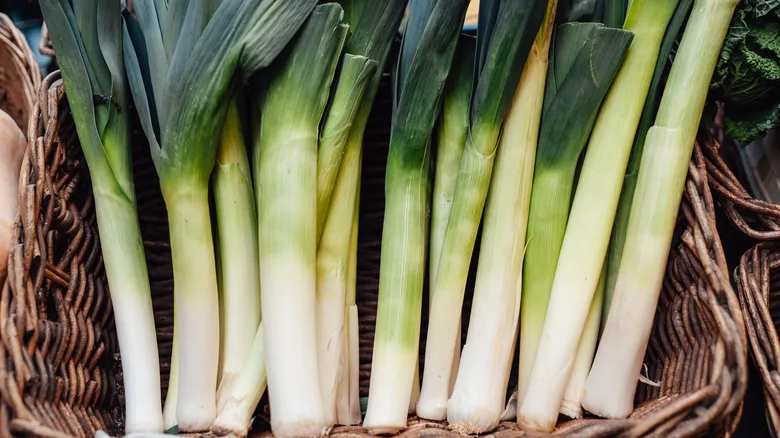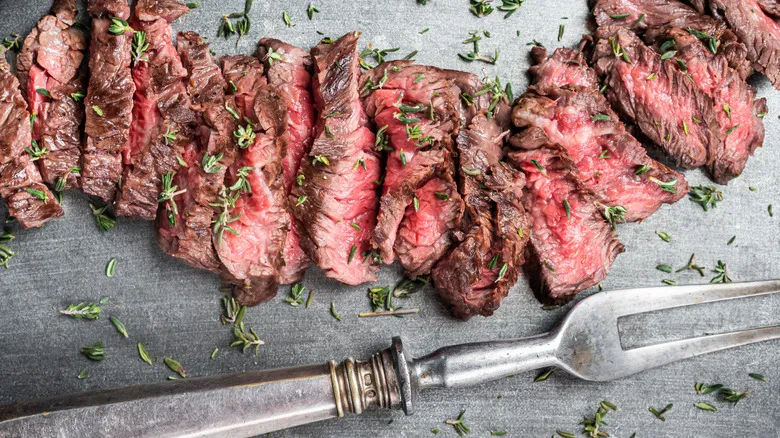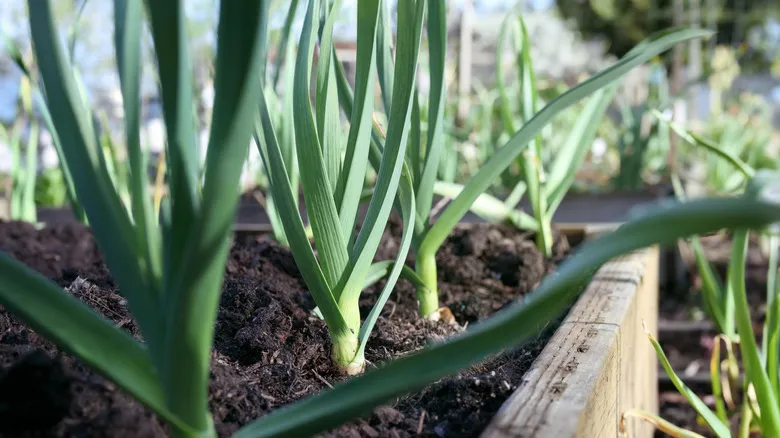What are green onions?

Green onions (Allium fistulosum) are essentially fully grown scallions. They form a small bulb and are usually harvested when their vibrant green tops reach approximately 1 foot in height. Unlike their more pungent relatives, green onions are particularly valued for their mild and slightly sweet onion taste, which becomes even more delicate when cooked. This is due to the fact that, as noted by the International Journal of Gastronomy and Food Science, heat helps to break down the sulfur compounds that contribute to their stronger flavors. Moreover, both the white bulbs and the long green stalks serve different roles in cooking.
In addition to their culinary uses, a lesser-known benefit of green onions is their high vitamin K content, which has been linked to potential protective effects against Alzheimer's disease, according to research from the National Library of Medicine.
A fundamental ingredient in various cuisines, especially in East Asia, green onions are featured in a multitude of recipes. For instance, in a pork stir-fry, green onions not only complement the dish but also elevate the flavor of the meat, particularly when combined with a hint of sesame oil. Since they can be enjoyed both raw and cooked, green onions are frequently added to salads, where their green tops are often used as a garnish.
What are leeks?

Unlike green onions, leeks (Allium ampeloprasum) do not form a bulb. However, this is not their only distinction. The leaves of leeks are coarse and grow at the very top of the vegetable, while the stalk beneath is thick and fleshy. Among the allium family, leeks are known for their mild flavor, offering a subtle taste with a touch of sweetness. However, they do come with a challenge — cleaning them can be quite difficult, as their leafy layers often trap a significant amount of dirt.
In contrast to green onions, not all parts of the leek are favored in cooking. The dark green tops are typically discarded during preparation because, while they are edible, they can be quite tough to chew. In comparison, the white bases and lighter green stems are much more tender, flavorful (especially as they age), and easier to digest.
If you want to avoid wasting the ends, you can unleash your creativity by transforming them into a flavorful stock. Alternatively, you could fry them until golden for a crunchy addition to salads, or caramelize them for a standout pasta dish or as a pizza topping. Whether used in soups, grilled, or roasted, leeks make a wonderful addition to nearly any recipe.
Recommended

Mistakes You're Probably Making When Cleaning Your Oven

How Yogurt Tenderizes Even The Toughest Steaks

The Magical Transformation Baking Soda Has On Regular Noodles

Why Reheating Leftover Eggs Is Almost Always A Bad Idea
Next up

